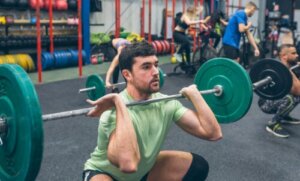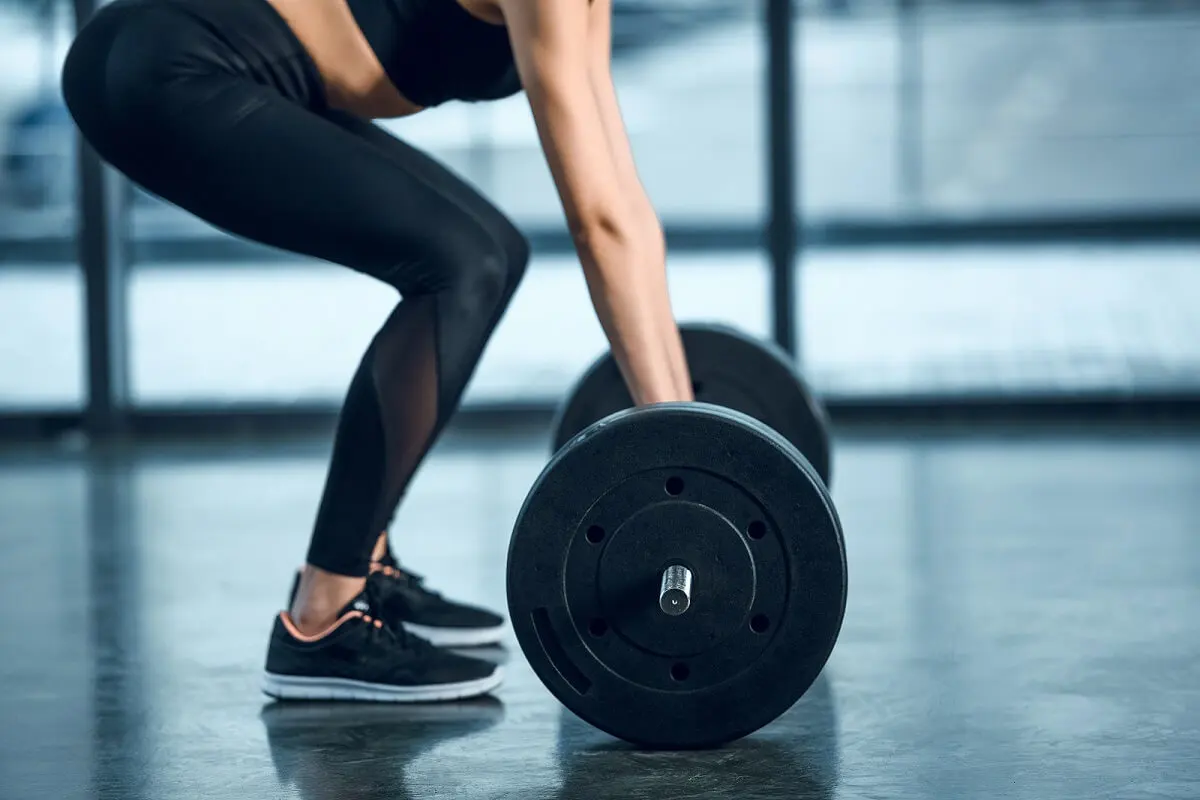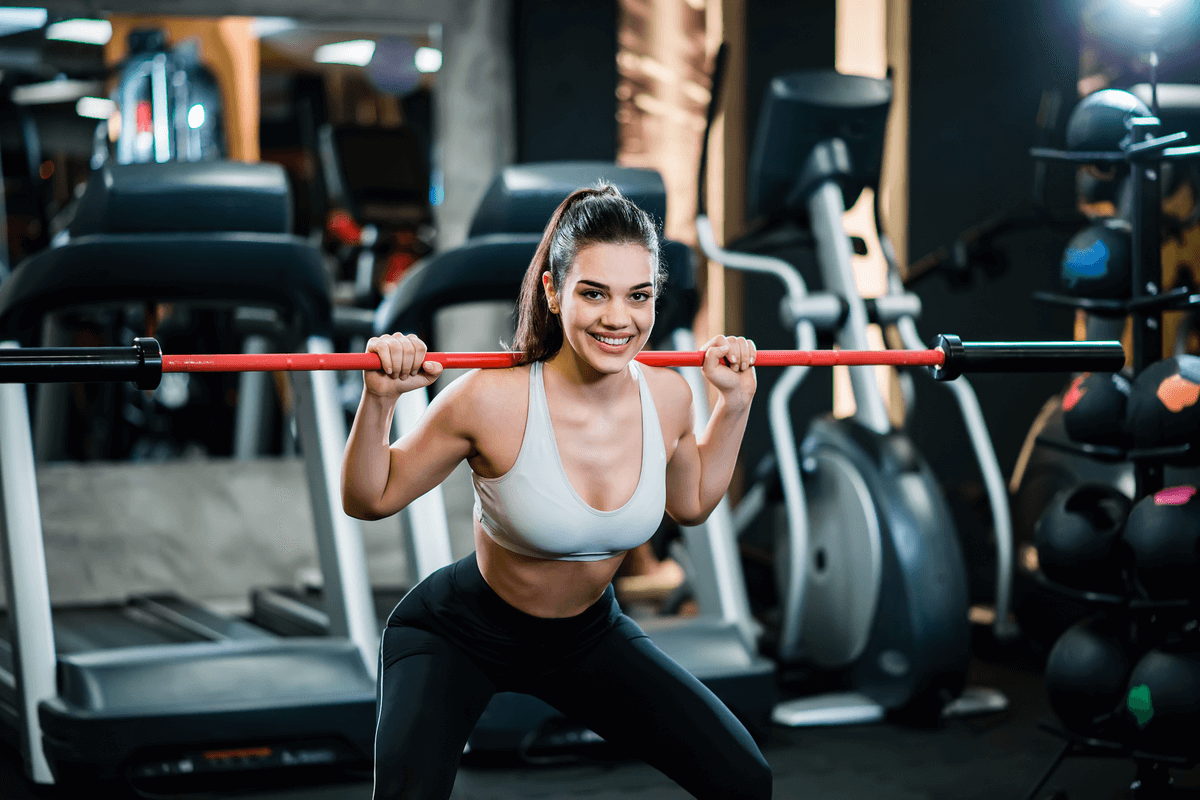Basic Weightlifting Moves: A Step-by-step Guide and Tips


Reviewed and approved by the nurse Leidy Mora Molina
All of the basic weightlifting movements must be performed with perfect technique. If you don’t execute them this way, you can get seriously injured very easily.
Weightlifting is a sport that involves the heaviest possible lifting of weight on a barbell. This weight in the form of discs is placed at the ends of that bar.
The activity has been part of the Olympic Games since 1896. The gym has been responsible for multiplying weightlifting techniques, as there are many routines that mimic or seek to adapt these movements to the training of any person.
The 3 basic movements of weightlifting
Being an exercise in which the use of force predominates in its maximum expression, weightlifting requires a higher level of resistance. Remember that the weight of the bar can be adapted to the moment you’ve begun your training plan.
In basic terms, there are 3 essential movements: the snatch, the clean, and the jerk. The goal is that, step by step, you can take each tip to perfect the technique.

1. The snatch
This is a combination of squats and the military press. The goal is to lift the bar overhead, while performing a squat simultaneously.
Before you start you should warm up, especially with your shoulders. Emphasize preparing the rotator cuff area, which is a group of muscles and tendons attached to the shoulder joint.
The muscles most involved in this exercise are those of the lower body, core, and shoulders.
This is the step-by-step:
- Pay attention to the type of grip you will use with the bar, which is called a hook grip. The grip consists of edging the bar with your thumb and the other four fingers will cover your thumb as you circle the bar.
- Your glutes should be positioned above the horizontal of your knees and your quads should be almost parallel to the floor.
- Keep your back straight in a neutral position, with your eyes straight ahead.
- When lifting the bar, do not separate it too far from your body, because this raises its weight and makes it difficult to achieve the lift. If you separate it too far, you risk injury.
- Once the barbell is up, don’t let it go behind your head, but over your head. This mistake can cause the bar to fall backward and injure your arms or shoulders.
We think you may be interested in reading this, too: The EMOM Routine in Crossfit: What Is It and How Can You Do It?
2. Clean or loaded
This is the movement with which you lift the bar from the floor to your shoulders. The bar will rest on your shoulders so that you can stand up.
Here you work almost all your muscles in the same way. In particular, your upper and lower body, as well as your core.
The step-by-step is as follows:
- Position your legs wider than shoulder-width apart, with your toes facing forward.
- Assume the hook grip, which you learned in the previous movement.
- Keep your back straight. Fix your gaze straight ahead.
- Lift the bar off the floor with a similar displacement to the deadlift.
- You perform a lumbar flexion to bring your body under the bar.
- You receive the bar over your shoulders. After the lumbar flexion, your elbows should point upward, emulating a chin-up rowing motion. The bar should not pass the level of your shoulders so that when you receive it you don’t injure this area.
- Elbows aligned at 90 degrees and assume the lowest position in the squat.
- Finally, you have to stand with the strength of your quadriceps and your entire lower body to maintain stability.
3. The jerk
This represents the last position in a deadlift. Here you go from having the barbell on your shoulders to lifting it completely with both arms, imitating the final position of a military press.
To perform the vertical thrust you have to initiate a stride, that is, position one leg in front of the other. Your shoulders, core, and leg muscles are heavily engaged in this movement.
The step-by-step is as follows:
- Your back must remain straight, while you adopt the stride position, as this can cause your back to lean forward or backward, which poses a risk of injury. Keep in mind that the stride you perform prior to lifting the bar is not complete.
- Your feet should be straight and forward. This is important for the strength of your knees, which are stressed.
- Once you are standing, with the bar still on your shoulders, is when you perform a small impulse to be in a half-stride position, with your right leg in front and your left leg stretched out behind you. Here you lift the bar with your arms. Hold this position for one or two seconds.
- Keeping the bar raised above your head, you lift your legs that are in a half-stride position so that, finally, you find yourself standing with the bar on top. At this point, you will have achieved the goal, with the three basic weightlifting movements.

Like this article? You may also like to read: Discover the Importance of Keeping a Day Off Your Exercise Routine
Tips when practicing the basic weightlifting movements
You require physical strength, mastery of technique in each movement, attitude, and mental strength to accomplish these demanding exercises. Consistency in the warm-up is essential. Start lifting a weight that’s adapted to your physical capacity and you will notice that, little by little, you will be able to lift more weight.
In addition to your physical strength, you have to work your mind, your speed, and your technique. Strength is worked through exercise routines, with a few repetitions of maximum load. The goal is that you move the maximum amount of weight in each set. When in doubt, make sure to get the assistance of a professional trainer.
All cited sources were thoroughly reviewed by our team to ensure their quality, reliability, currency, and validity. The bibliography of this article was considered reliable and of academic or scientific accuracy.
- López, A. Metodología del entrenamiento con pesas para la enseñanza de los ejercicios olímpicos de halterofilia. Benemérita Universidad Autónoma de Puebla. México; 2016.
- Oliva K, Gómez A, Zamora R, García Y. Análisis biocinemático de la ejecución del arranque en levantadoras de pesas escolares de Granma. Revista de la facultad de cultura física de la Universidad de Granma. 2017; 14 (42): 62-74.
- Campos J, Poletaev P, Cuesta A, Pablos C, Tébar J. Estudio del movimiento de arrancada en halterofilia durante ciclo de repeticiones de alta intensidad mediante análisis cinemáticos. European Journal of Human Movement. 2004; 12: 39-45.
This text is provided for informational purposes only and does not replace consultation with a professional. If in doubt, consult your specialist.








